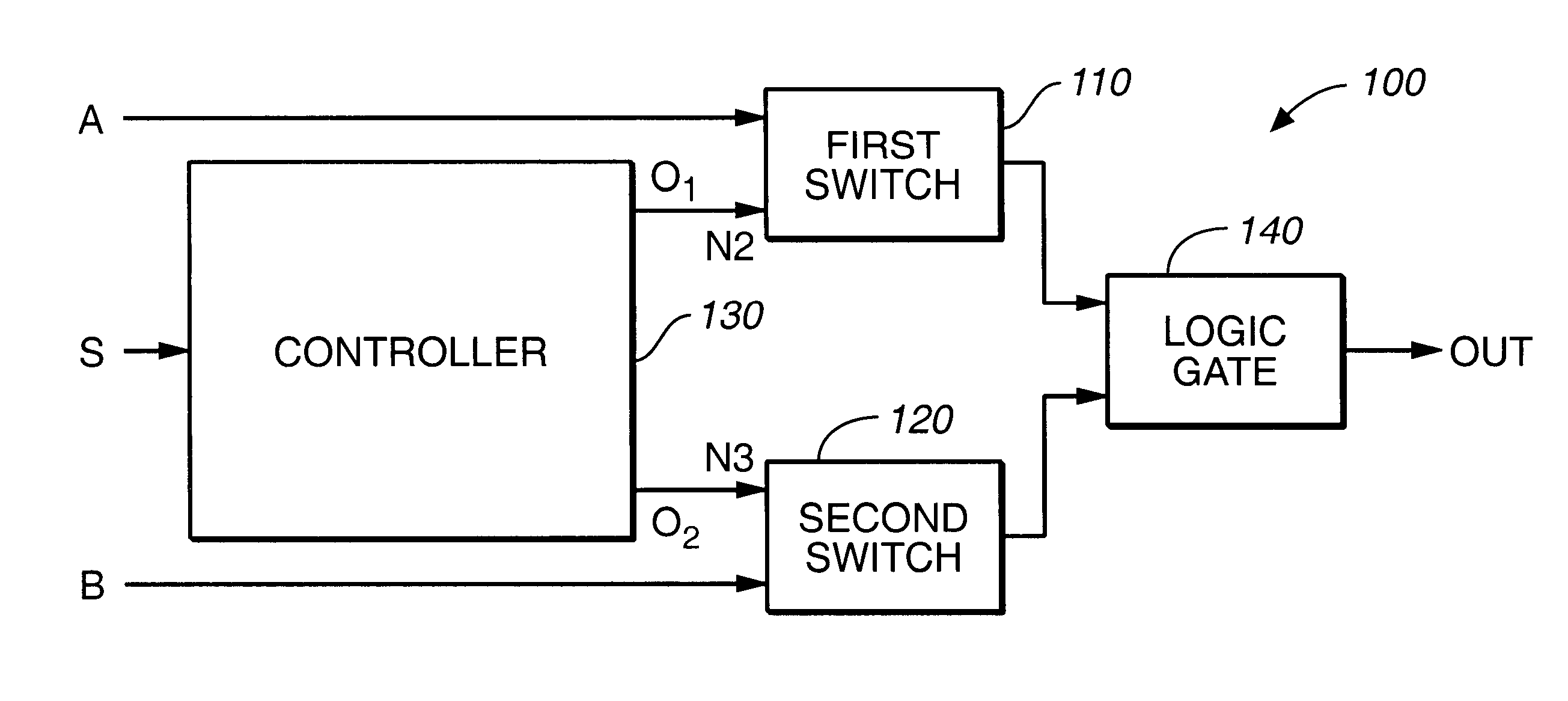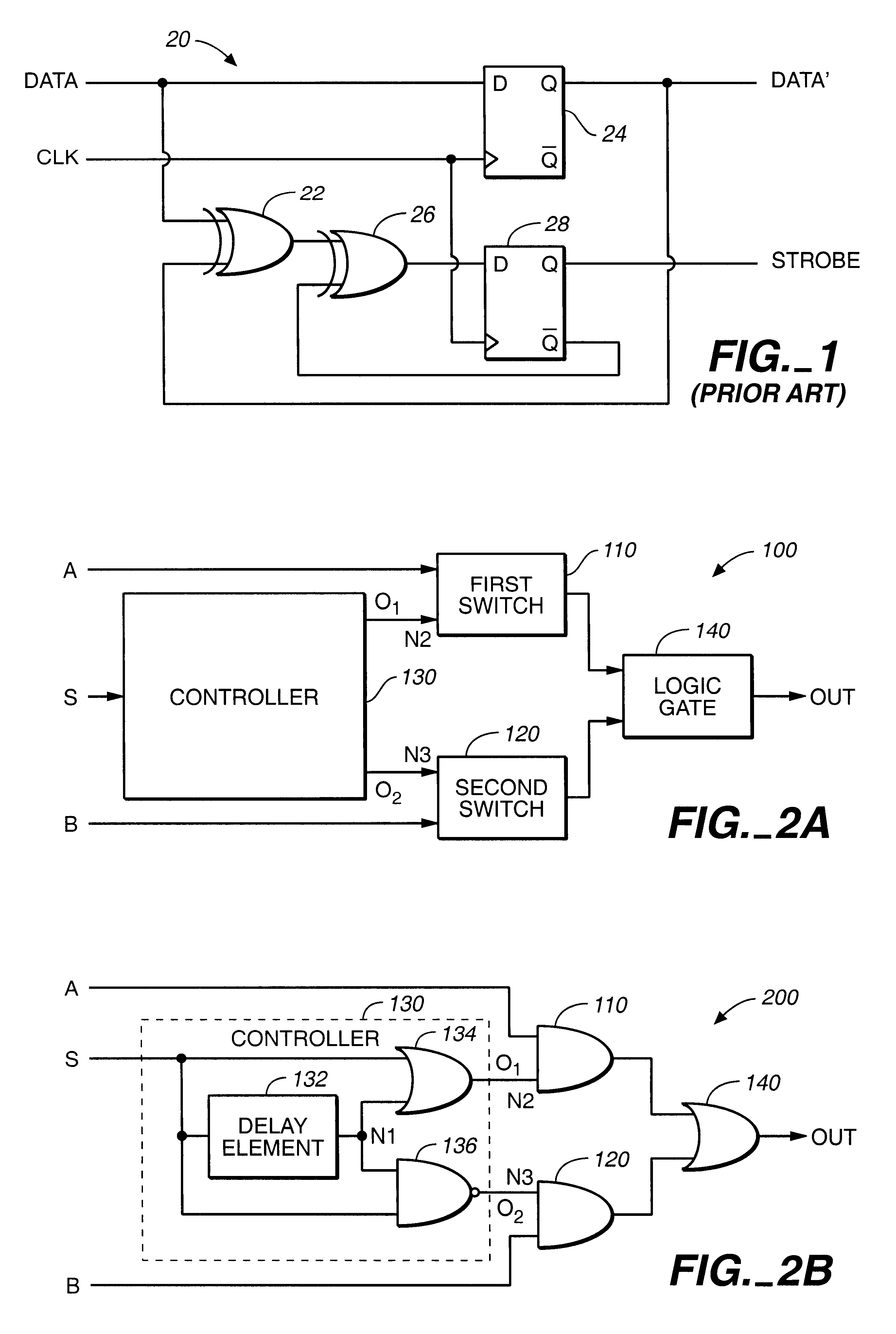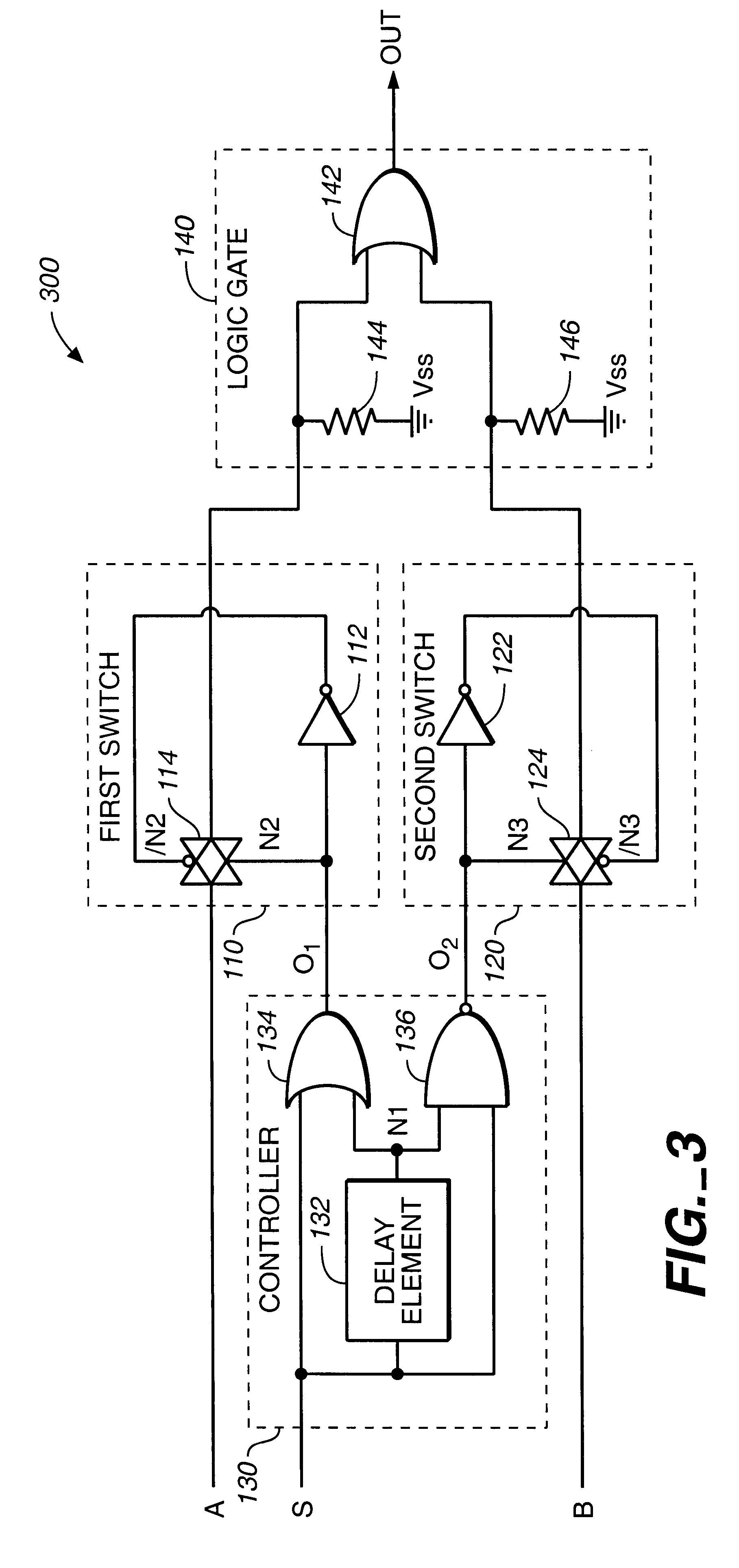Circuit and method for switching between digital signals that have different signal rates
a digital signal and signal rate technology, applied in the direction of generating/distributing signals, pulse techniques, instruments, etc., can solve the problems of generating data errors, conventional approaches that do not operate properly, and different signal rates, so as to prevent glitches during switching operations, substantially different signal rates, and convenient implementation
- Summary
- Abstract
- Description
- Claims
- Application Information
AI Technical Summary
Benefits of technology
Problems solved by technology
Method used
Image
Examples
Embodiment Construction
Disclosed are various embodiments of a circuit and a method for encoding a digital signal. Bits of the digital signal are beneficially encoded in parallel to reduce latency of encoding operations. Also disclosed are various embodiments of a circuit and a method for switching a signal that has a high signal rate onto the same signal path with another signal that has a low signal rate without producing a glitch on the signal path. Glitches are prevented even where the various signals have signal rates that differ by 50 MHz or more. The various circuits and methods are highly beneficial for encoding data signals to generate strobe signals, and for supplying such signals to the same signal path with an arbitration signal, in conformance with IEEE Standard 1394 of the Institute of Electrical and Electronics Engineers. The entirety of IEEE Standard 1394 is incorporated herein by reference.
Referring now to FIG. 1, there is shown a schematic diagram of a conventional encoder 20 specified in...
PUM
 Login to View More
Login to View More Abstract
Description
Claims
Application Information
 Login to View More
Login to View More - R&D
- Intellectual Property
- Life Sciences
- Materials
- Tech Scout
- Unparalleled Data Quality
- Higher Quality Content
- 60% Fewer Hallucinations
Browse by: Latest US Patents, China's latest patents, Technical Efficacy Thesaurus, Application Domain, Technology Topic, Popular Technical Reports.
© 2025 PatSnap. All rights reserved.Legal|Privacy policy|Modern Slavery Act Transparency Statement|Sitemap|About US| Contact US: help@patsnap.com



